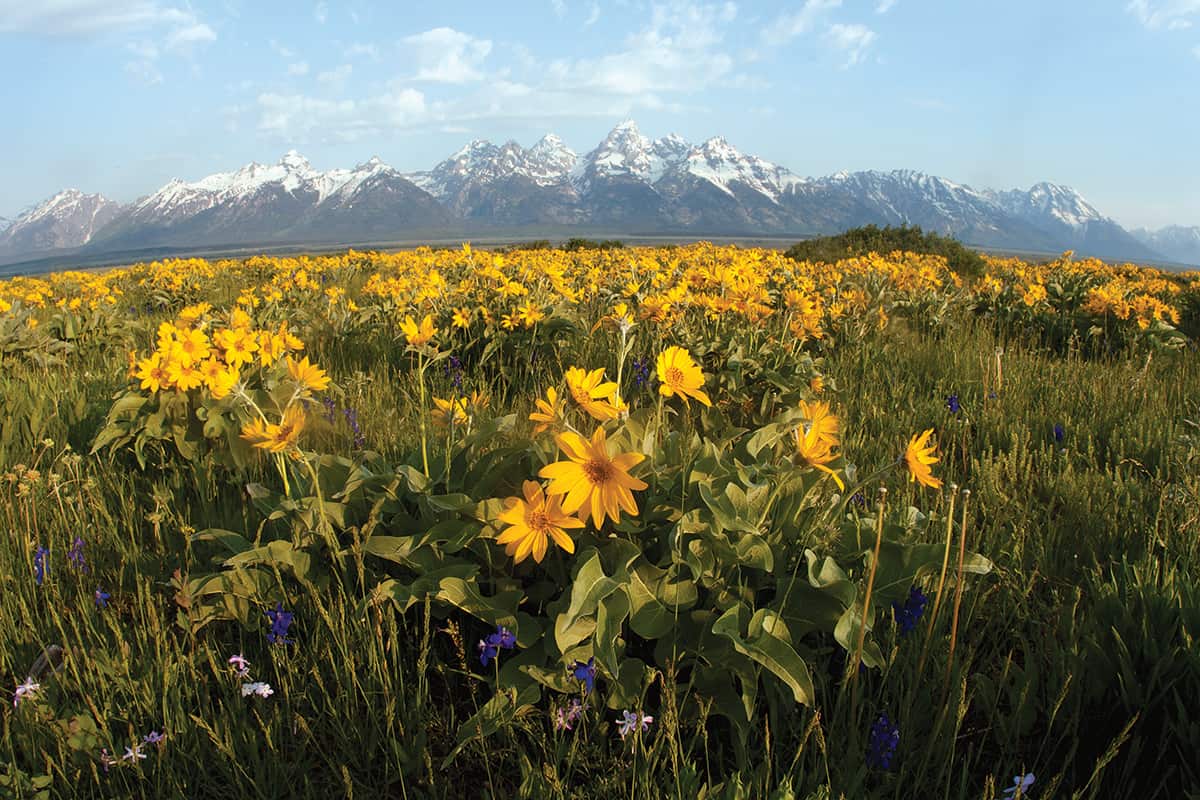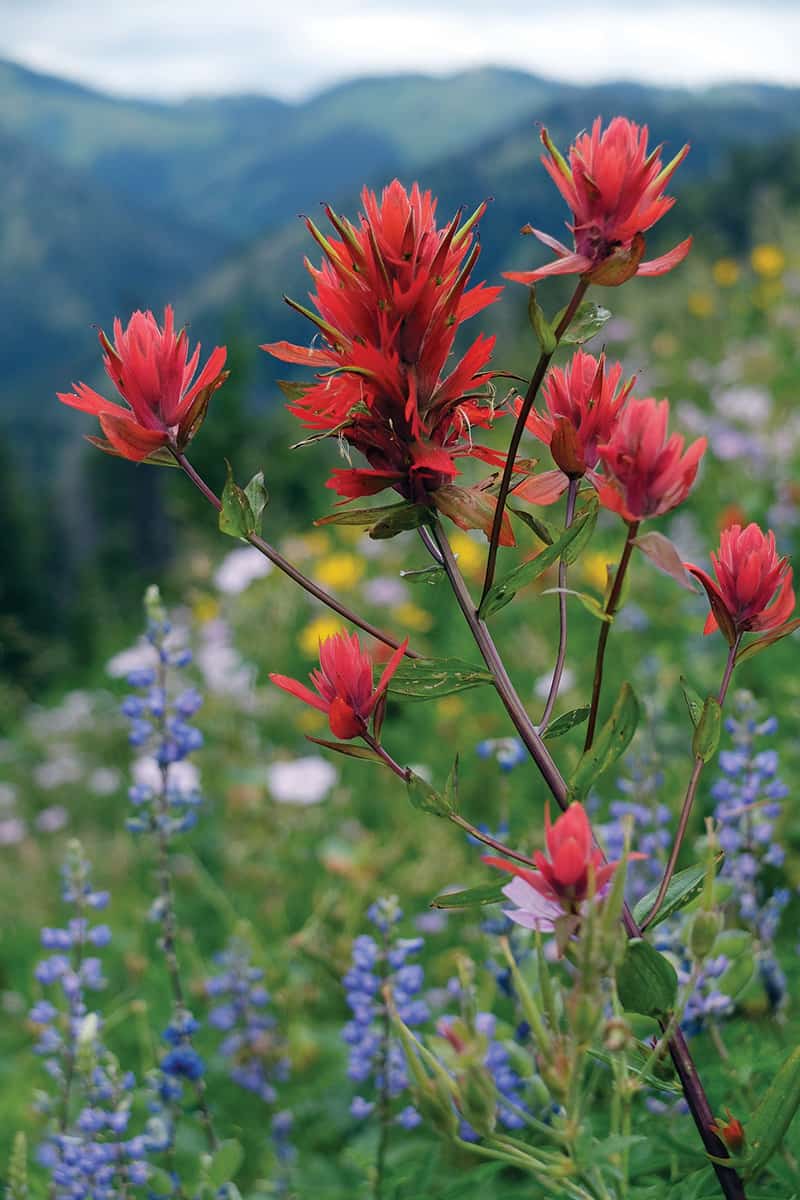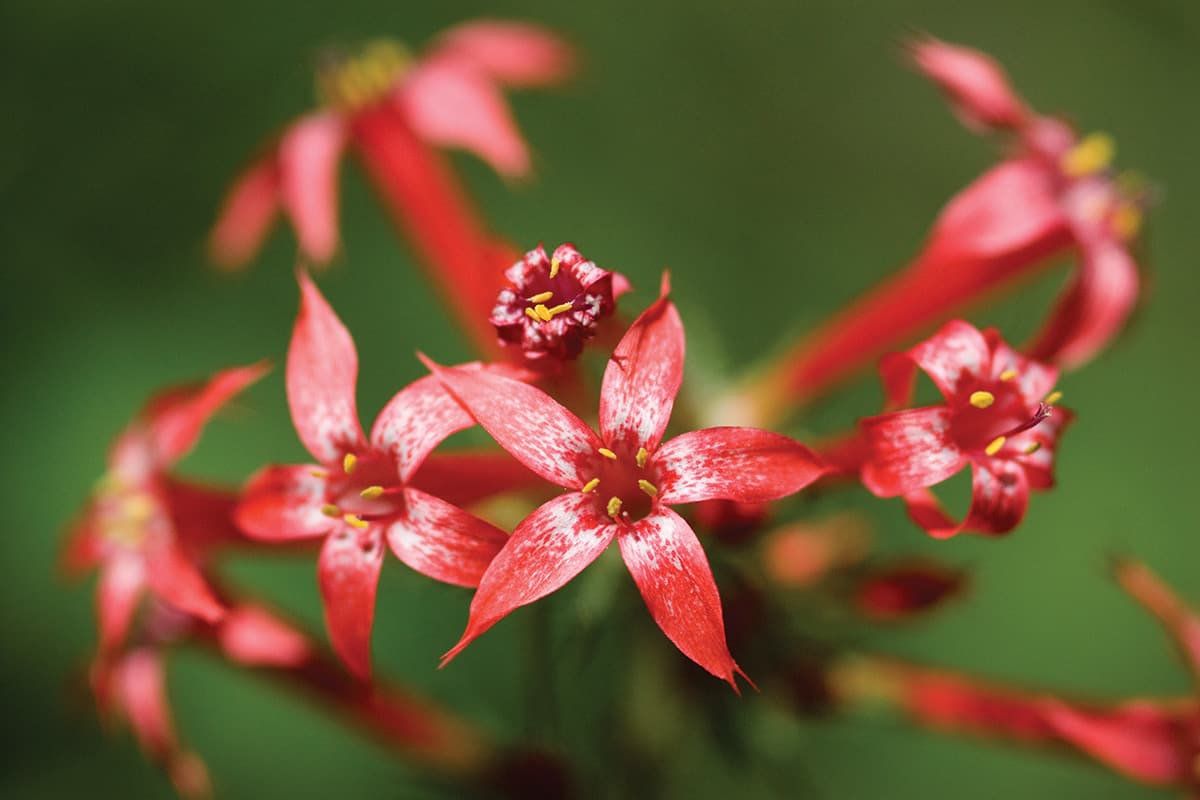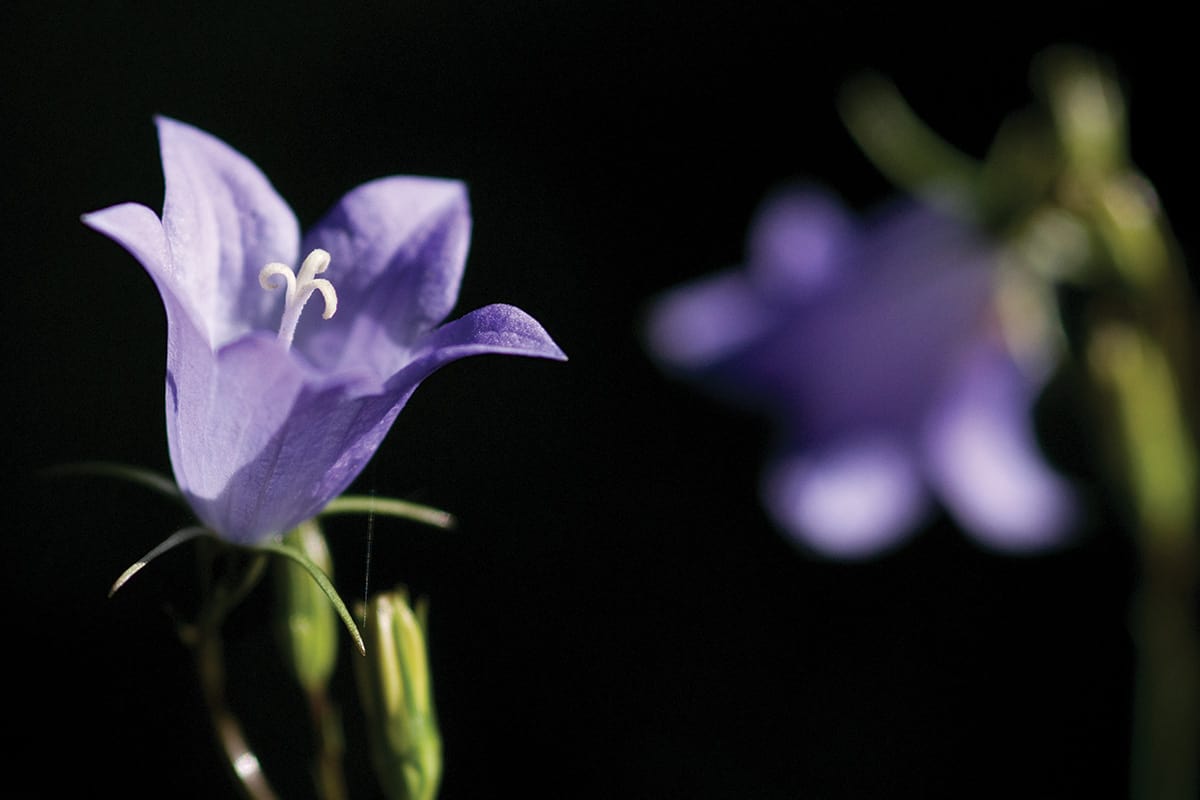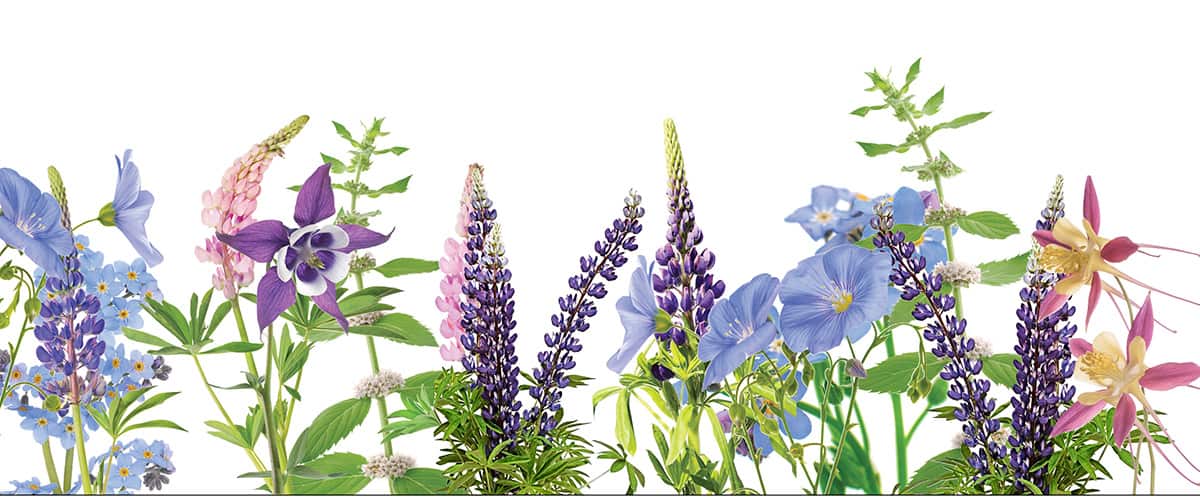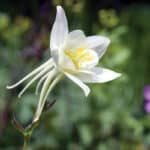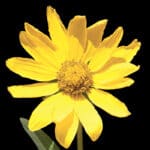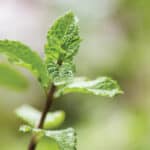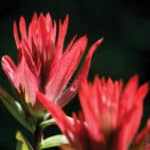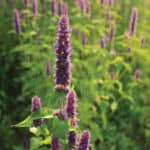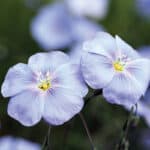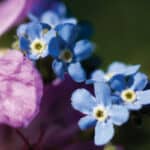Read The
Current Issue
Wildflower Watching
Look for flora instead of fauna, and you’re guaranteed a successful outing. You might even see some wildlife along the way.
By Whitney Royster
LAST THURSDAY EVENING at five o’clock, there was a bull moose in the willows on the bank of the Snake River by the bridge in Moose. And then there wasn’t a moose to be seen in the area for the next several days. Even in a community named for its number of moose, you can’t always see one. (During the time moose were absent in Moose, they were spotted by hikers up Cache Creek and on the History Trail on Teton Pass.) Wildlife watching can be frustrating for its unpredictability: Seeing an animal is a stroke of luck, and then, if you’re lucky enough to spot one, it could be half-hidden behind bushes, so far in the distance it’s barely more than a speck or moving so quickly you only get a brief glimpse.
Now consider wildflowers. True, they, too, come and go—depending on the species, they could be out for four to eight weeks—and different species grow in different places, but once you know the where and when, wildflowers are a sure thing. Think flora isn’t as exciting as fauna? Read on.
Over a six-year period, on the first two miles of the old Cache Creek Road (long a popular walking route), Susan Marsh, a writer and former twenty-two-year employee of the Bridger-Teton National Forest, counted 300 different species of flowering plants. Three hundred species in two miles. That’s a new species about every ten steps. “I was studying plants, and there were ten to twenty species I didn’t know at all,” says Marsh, who recently wrote the book Cache Creek: A Trailside Guide to Jackson Hole’s Backyard Wilderness. “It became not a game exactly, but a challenge.”
“I was doing a lot of hiking on the same trails and noticed things in bloom I hadn’t noticed before,” Marsh says. Flowers “record the seasons,” she explains. “You can follow the progression of seasons by what’s blooming.” Looking at wildflowers also means looking at the landscape—hillside or meadow, shade or sun, rocky soil or dirt. Flowers are “a way of entering the world of plants and going deeper than, ‘What color?’ or ‘What’s flowering?’ ” Marsh says. “Plants create the habitat from insects to elk. Where those things are growing is where the animals are going to be.” Looking for plants might lead to seeing animals since wildlife from bears to birds rely on them.
AMY TAYLOR, A local botanist who has been involved with Teton Plants, a chapter of the Wyoming Native Plant Society, for twelve years, says looking for wildflowers is becoming more popular. Since Teton Plants began offering programs at Teton County Library, its email subscriber list has grown nearly threefold. As many as ninety people have crowded into the library’s Ordway Auditorium for meetings. The group’s field trips (held about four times in summer and once in fall, winter, and spring) can have a waiting list.
Teton Plants’ organizers got the idea to do field trips in the early 1990s to offer people the chance to learn and appreciate local flora and habitats. The group heads to places like Josie’s Ridge, Cache Creek, Blacktail Butte, and the top of the Jackson Hole Mountain Resort tram. They have gone into the Wyoming Range, Grand Teton National Park, and Teton Valley. Some hikes are more than ten miles. Others are shorter than a mile. Taylor calls the latter a “botany crawl,” because there is so much to see and talk about in a short distance. Some years ago, the group partnered with the U.S. Fish and Wildlife Service to offer a plant walk on Miller Butte and its nearby environs, areas that are closed to the public. (It is illegal to leave the roads in the National Elk Refuge.) There was a long waiting list for that excursion.
Outings to wetland areas of Grand Teton National Park could have the group looking for sundews, a carnivorous plant. Field trippers look for the first steershead in spring. They have been to Whiskey Mountain near Dubois to see Jones’ Columbine, a small columbine found growing only in limestone in subalpine/alpine areas. In July, the group heads to Phillips Canyon to see bright pink fireweed. In August, they might hike to see and eat wild, edible berries. Trips have also focused on the plight of whitebark pine.
Taylor says there can sometimes be surprises for hikers looking for plants, like when the group headed to Death Canyon. “The wildflowers were wonderful along the way, but the highlight was seeing a rubber boa on the trail,” she says. “Many longtime valley residents had never seen this rarely seen snake. That’s what I love about these outings: It’s not just about the wildflowers but also about the ecosystem they share.”
When Cathy Shill, who owns and runs The Hole Hiking Experience, takes clients out she shares more than the names of flowers. “I like to know an interesting fact about them, like whether they were used as a dye or a medicine or a food,” she says. “That way, you can connect on a more tangible level, relate a little more deeply to the natural world. It makes the story of the forest start to unfold.”
For example, nettles sting, but relief is usually nearby. Plantains, part of the plantago species (not a banana; these are rosettes of dark green leaves), often grow close to nettles. If you chop up a plantain, add some moisture like water or spit, and mash it together, you can then smear it on nettle-stung skin for relief. Also, if cooked, nettles can be a source of iron.
Violets have edible roots and water parsnips can also be eaten. Native Americans were said to use water hemlock on the tips of arrows for hunting. A toxin in the plant is a convulsant, causing seizures and respiratory paralysis.
THE TIME OF year, elevation, and terrain dictate what flowers bloom when and where. Spring’s pilgrims are on the valley floor and south-facing hillsides, the first areas to be free of snow. These early blooming flowers often grow close to the ground, because as the summer wears on, taller flowers take over. Marsh looks for Wyeth biscuitroot, a favorite food source of grizzly bears, in May. Shill likes steershead in the spring. “So ephemeral,” she says.
As the snowline moves up, so does the bloom. By June, elevations between 7,500 and 8,500 feet are a “mosaic of color,” Shill says. It’s the big and bold that are out now—yellow balsamroot, delicately purple lupine, and Indian paintbrush, Wyoming’s state flower. Into July, as snowmelt continues to cascade down from the higher mountains, pink monkey flowers settle in alongside the water like ribbons. It is also in July that white and purple columbine, a delicate flower with five petals that extend back into tendrils, bloom. Columbine tends to favor cool understories.
Into August, as the heat dries up the wildflower show at lower elevations, you have to head to places like Alaska Basin, which is near 10,000 feet on the border of Grand Teton National Park and the Jedediah Smith Wilderness. Since snow patches here linger until late July or even early August, late August is often the peak of Alaska Basin’s wildflower season. The same goes for any other water-rich area between 9,500 and 10,500 feet. Marsh says by the end of August, elevations with these conditions can have “great displays” of the mountain bog gentian—a bright blue, funnel-shaped flower that loves wet, cold mountain meadows. Different species of paintbrush and lupine can decorate the high alpine meadow, too, she says.
WORRIED ABOUT MEMORIZING names? Don’t. Instead, focus on noticing things—that one side of the flower is purple, the other pink; that the forest floor has transitioned from flowers to shrubs; or that the colors have changed from bright to darker greens. One area may be getting more water or more sun, or might be shaded by a larger evergreen. The soil may be changing from dirt to rock, or the steepness of the slope might be shifting in a way so that certain plants can no longer hang on. “It gets you into the landscape, into the subtleties of the terrain,” Shill says. “It’s a much more intimate connection.” This kind of nuance brings the forest alive and roots people to it, and to the world in general. “When I see the first balsamroot or wild geranium,” Marsh says, “it’s like greeting an old friend.”
